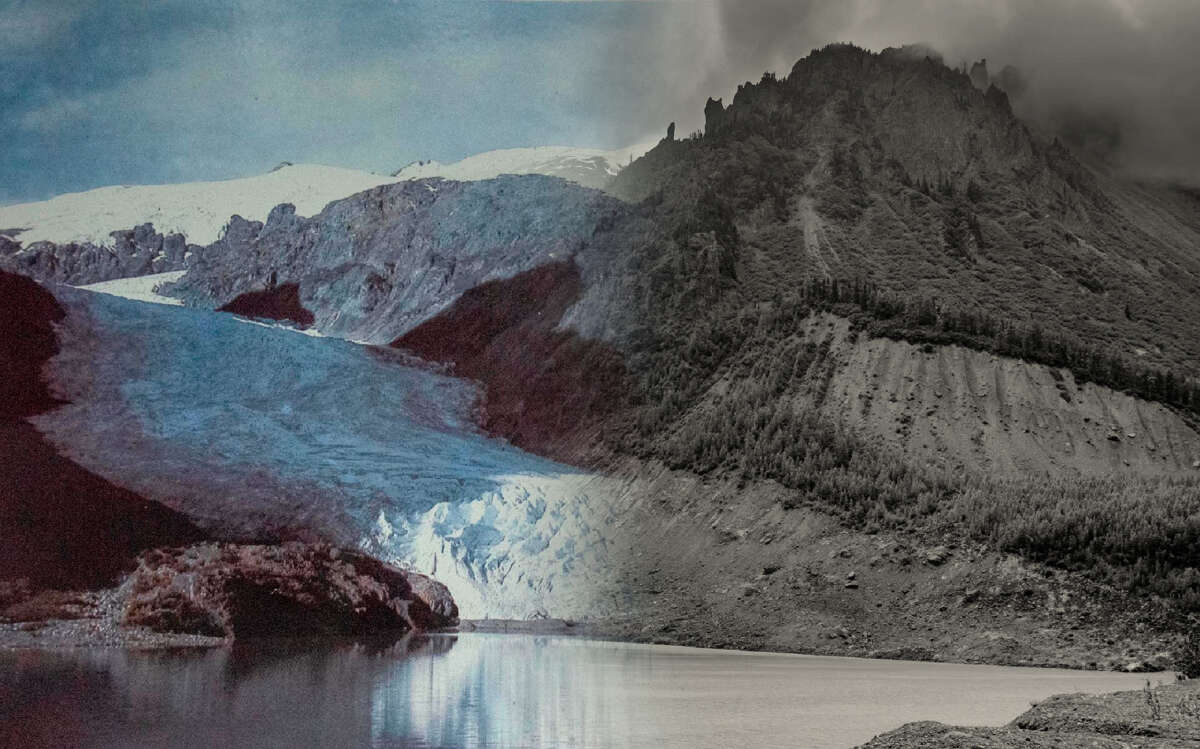Eighty-five percent of Northern Hemisphere glaciers terminating in the ocean have been retreating since 2000. Nine-thousands gigatons of ice have melted from glaciers since the 1960s increasing ocean levels by over an inch, with the rate of glacier ice loss tripling since 1990. Two-thirds of land-based glaciers are on track to disappear by 2100.
However, glaciers worldwide have also been retreating on average since the end of the Little Ice Age, a 450-year long period from around 1400s to the mid-1800s when the average global temperature fell by 0.6 degrees Celsius (1.1 degrees Fahrenheit). Compare this to 6 degrees C (11° F) of cooling below normal with the last 100,000 year-long glacial period or ice age pulse that ended about 10,000 years ago. Cooling during the Little Ice Age was not persistent and was different in some places than others but globally, Earth cooled — a little.
Four slight cold and warm fluctuations in the global average temperature during the past 2,000 years have been identified: the Little Ice Age; the Roman Warm Period, which covered the first centuries of the Common Era; the Dark Ages Cold Period, from 400 to 800; and the Medieval Warm Period between 800 and 1200. None were global in extent like current human-caused warming. All involved less than a degree Celsius of average global temperature change.
The causes of the beginning and end of the Little Ice Age have long been debated within the scientific community. What the course of this debate has revealed is that human beings have played a major role in climatic transformations such as the Little Ice Age that were previously thought to be “natural,” or more precisely, not due to human activity. Further, human beings inevitably impact Earth systems, but within certain limits, these systems can self-restore. We’re not the scourge of the Earth, but our current activities may very well be.
Encyclopedia Britannica says there were several probable causes of the Little Ice Age: “It was likely a combination of factors that included long periods of low sunspot activity (which reduced the amount of solar energy that reached Earth), the effects of explosive volcanic eruptions, and drastic changes in the North Atlantic Oscillation (the irregular fluctuation of atmospheric pressure over the North Atlantic Ocean).”
How Did the Ice Age Begin?
Bear Glacier 2000 and 2018
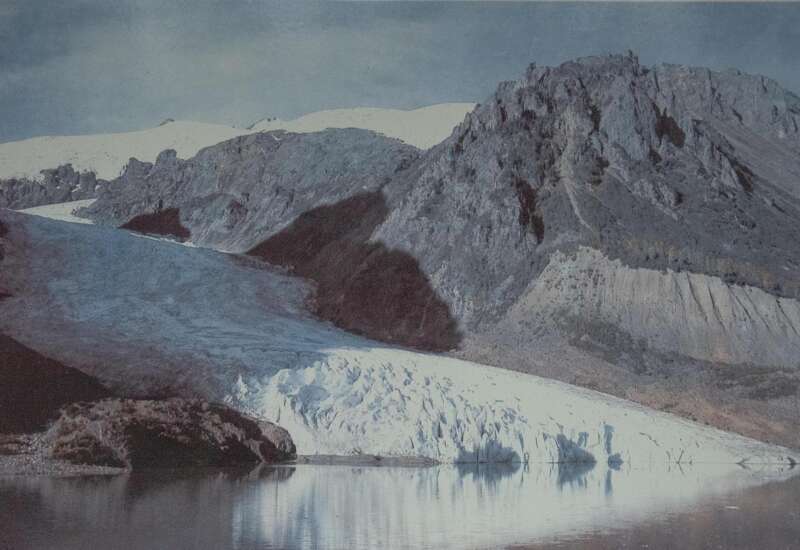
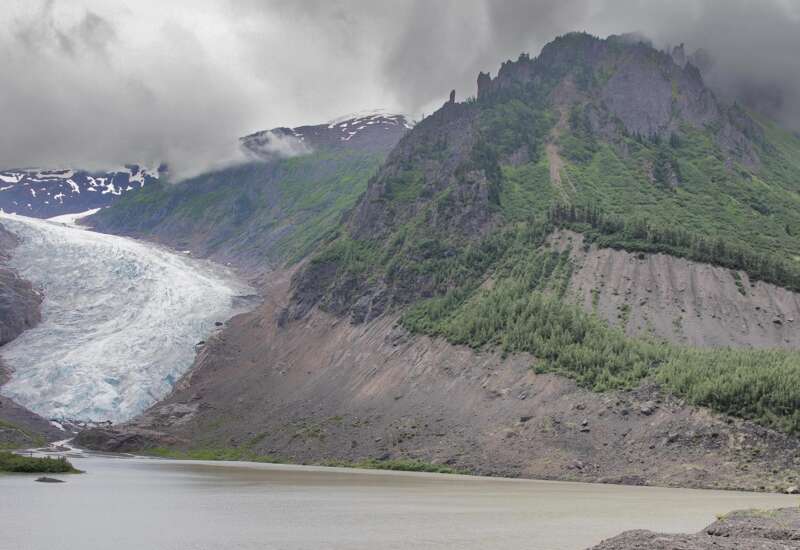
An article in the Journal of Space Weather and Space Climate found, “Climate model simulations suggest multiple factors, particularly volcanic activity, were crucial for causing the cooler temperatures in the Northern Hemisphere during the Little Ice Age. A reduction in total solar irradiance likely contributed to the Little Ice Age at a level comparable to changing land use.”
Findings by Syun-Ichi Akasofu published in 2010 hypothesize the “recovery” from the Little Ice Age was a recovery of solar strength after the low levels of sunspot activity between the mid-17th and early 18th centuries — known as the “Maunder Minimum” — caused the Little Ice Age, and that this recovery is ongoing today. The pivotal finding from Akasofu was that warming would continue on a linear path of increasing solar output of 0.5° C per century, or about 0.9° C by 2100. When this finding was published this concept was still plausible, but current warming of 1.2° C in 2020, according to the Intergovernmental Panel on Climate Change’s (IPCC) Sixth Report, seems to have disproven Akasofu’s work. NASA shows, however, that the Maunder Minimum ended by 1715. NASA states, “There is little evidence that the Maunder Minimum sparked the Little Ice Age, or at least not entirely by itself (notably, the Little Ice Age began before the Maunder Minimum).”
One of the latest findings in December 2021 out of the University of Massachusetts Amherst shows that a warmer sun resulting from high solar sunspot activity (before the Maunder Minimum cool period) and low volcanic activity that creates cooling created changes in the jet stream that allowed warm water to flow further north into the North Atlantic, which in turn created increased ice discharge from Greenland that literally cooled the North Atlantic enough to slow the flow of the Gulf Stream. But the authors also say these forces alone were not strong enough to create such a long cold period as the Little Ice Age and that the cooling eruptions from volcanoes must have done the rest.
Matanuska Glacier near Anchorage, Alaska, 2007 and 2018
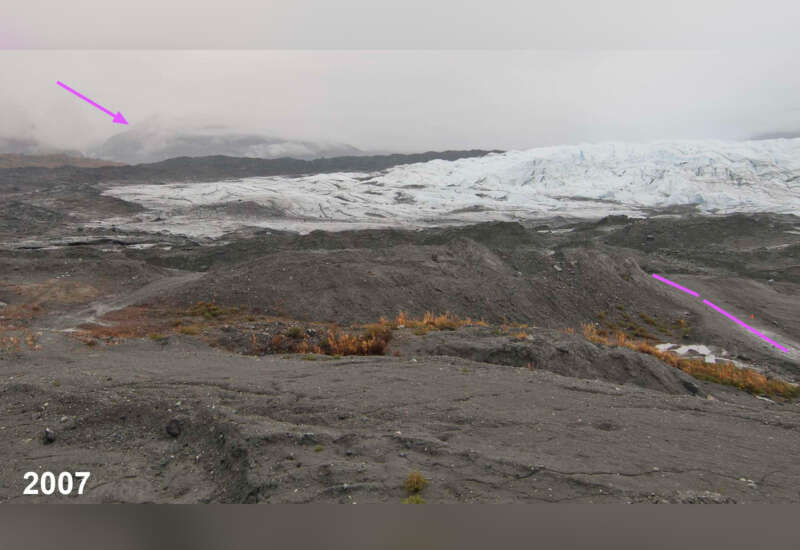
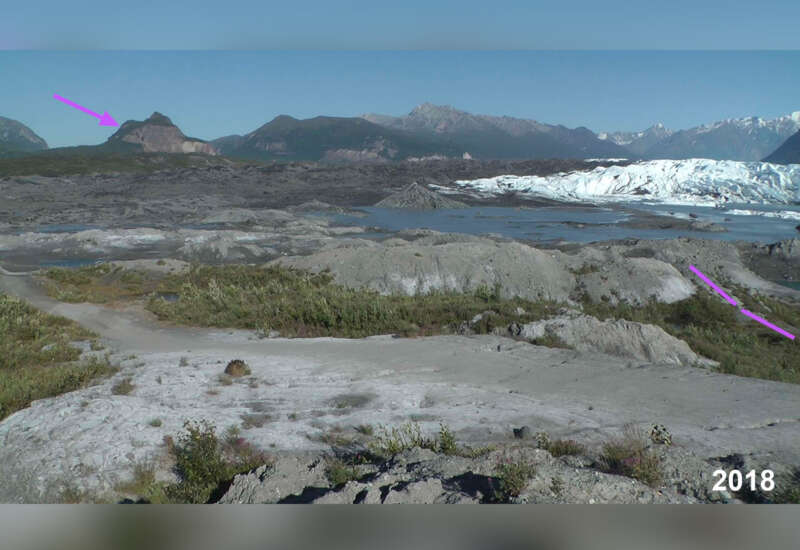
So How Did the Little Ice Age End?
According to a 2013 study, starting about 1850, increased soot output from burning coal in industry and trains in Europe created glacial deposits that absorbed heat and reversed glacial advance, ending the Little Ice Age.
This “industrial soot hypothesis,” however, was based on low-detail ice core evidence. In 2018, highly detailed interpretation of European glacier cores back to 1750 showed the industrial revolution did not significantly increase soot on the glaciers until about 1875, when 80 percent of the increasing glacial retreat had already occurred, disproving the “soot hypothesis.”
Muir Inlet Scene, Glacier Bay Alaska, 1880 and Today
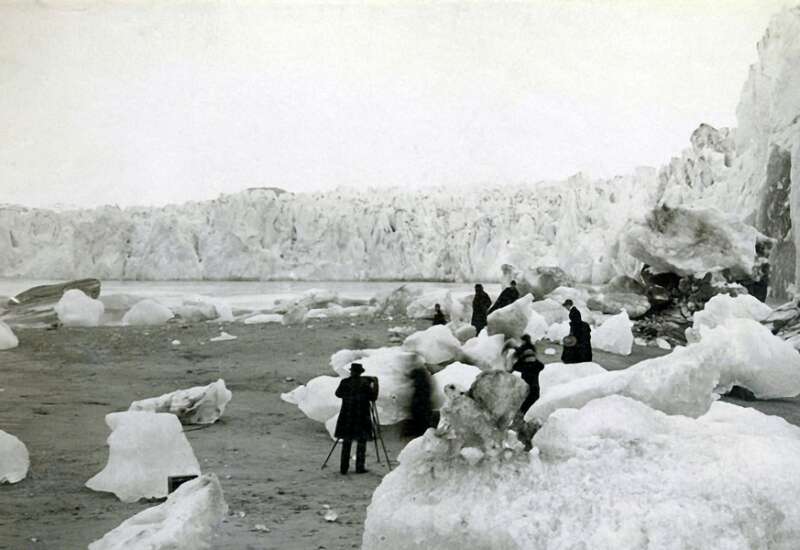
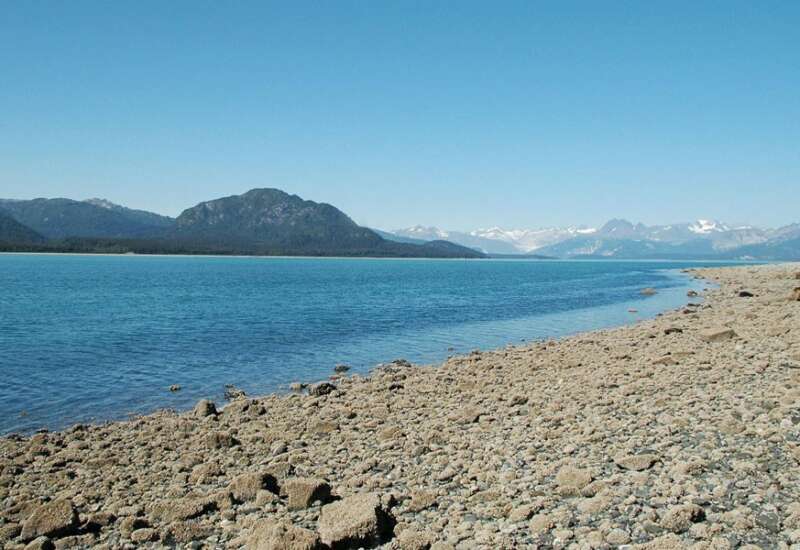
Switzerland’s glaciers have lost half their volume from 1931 to 2016 and almost all of the loss has occurred since 1990. Beyond glaciers that touch the ocean, most of the world’s mountain glaciers have been retreating for more than a century as well. Retreat is evident on all continents, and the retreat rate has increased recently.
Volcanic eruptions can cool our climate by ejecting sulfates or global cooling pollutants into the stratosphere. The last 150 years of the Little Ice Age had only about half of the volcanic eruptions as the first 300 years, possibly allowing warming at the end of the cooling period. But the very end of the Little Ice Age, between 1850 and 1900, saw the largest group of volcanic eruptions in the entire 990-year period from 1,000 to 1990. How, then, could the largest grouping of cooling volcanoes end the Little Ice Age?
Reid Glacier, Glacier Bay, Alaska, 1899 and 2003
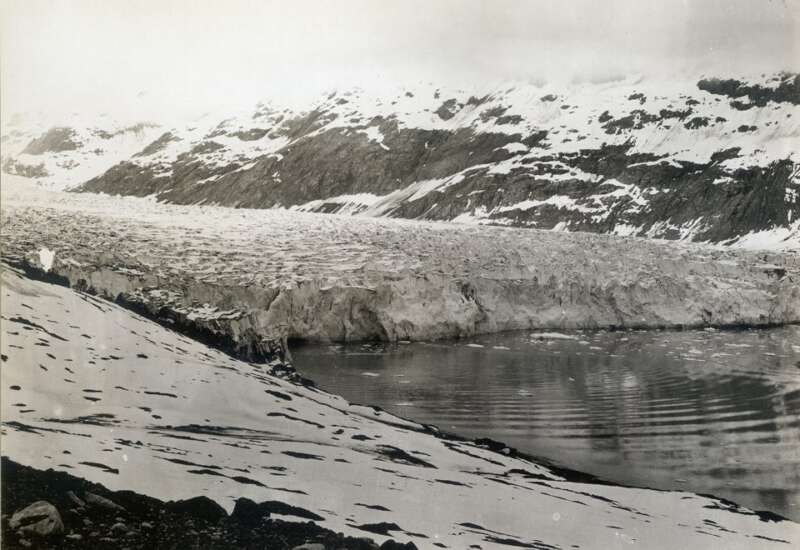
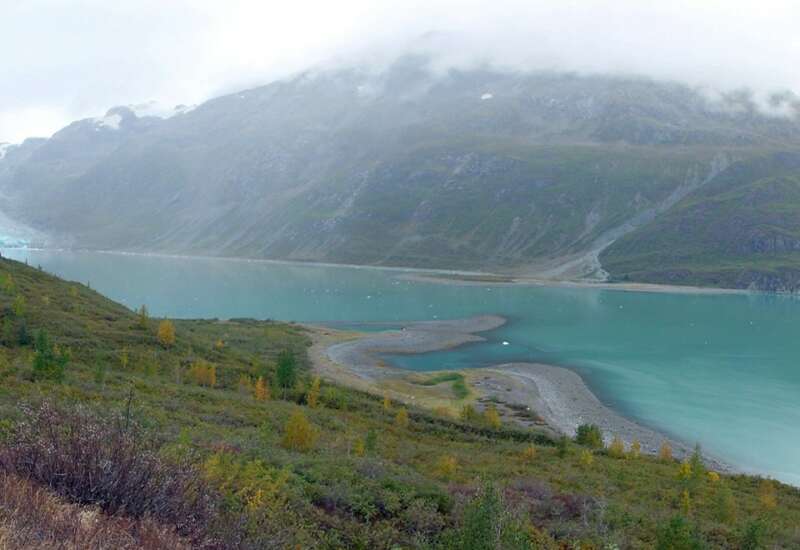
Obviously, there is a lot of discussion about not only the cause of the Little Ice Age, but the end. And it is this ending that is important in this story.
It is widely accepted that “the Little Ice Age ended,” or that the mid- to late-19th century saw a “natural recovery” from the Little Ice Age where we warmed up a little, or “back to normal.” All of these hypotheses — volcanic cooling, the fluctuations in warming from the sun, changes in predominant weather systems over the North Atlantic, and ocean warming that increased ice discharge — may or may not be valid. But it is likely that some combination of the above is indeed responsible for the temperature fluctuations that occurred, not only in the Little Ice Age but in the Medieval Warm Period, the Dark Age Cold Period and the Roman Warm Period. What caused the Little Ice Age to end so near the beginning of the industrial age though, when humankind’s fossil fuel greenhouse gas emissions started to skyrocket?
There is an elegant solution to this conundrum — the Little Ice Age did not end “naturally;” it was ended by climate change. However, the climate change that ended the Little Ice Age is not the climate change familiar to us, which started with the Industrial Revolution.
This hypothesis that the Little Ice Age was both caused by and ended by climate change is called the Ruddiman Hypothesis, or the Early Anthropocene Hypothesis, and it goes all the way back to 8,000 years ago when humankind first started clearing forests for agriculture and domesticating animals.
William Ruddiman is a paleoclimatologist professor emeritus at the University of Virginia who spent most of his career at Lamont-Doherty Earth Observatory at Columbia University. He first began publishing on the Early Anthropocene Hypothesis in 2003. This hypothesis is quite different from predominant thought on the beginning of global warming at the time, which persists today. Ruddiman shows global warming did not start at the beginning of the industrial era in late 19th century, but that humans first began warming Earth through forest clearing after the emergence of agriculture 7,000 to 8,000 years ago.
Muir Glacier, Glacier Bay, Alaska, 1941 and 2004
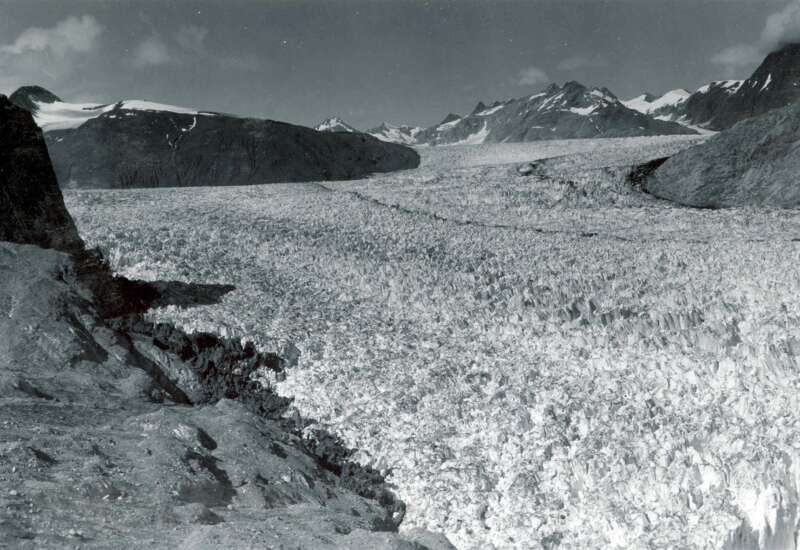
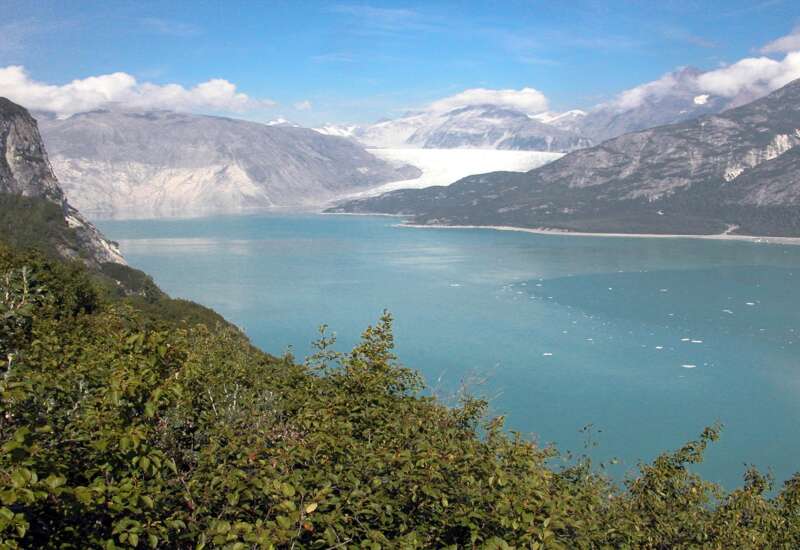
Before the dawn of the industrial age, it was supposed our climate was stable for about the last 10,000 years in an “interglacial” period, which for about the last million years, has been a relatively short warm period between ice age pulses that each last about 100,000 years. Ice age pulses are about 6° C (11° F) cooler than today, whereas the small fluctuations in temperature over the last 10,000 years that include the Little Ice Age were only about 1° C (1.8° F) or less. Ruddiman proposes that our climate is much more sensitive than commonly assumed, and that it was not the Industrial Revolution that started climate change, but greenhouse gas emissions from forests progressively cleared for agriculture followed by additional methane emissions from rice flood agriculture.
This makes a lot of sense considering how much more sensitive our Earth systems are to warming impacts than has been projected for decades. Our oceans are warming 40 years ahead of modeling predictions with ocean heat uptake 50 percent greater than previously assumed. Major hurricane intensity is 50 years ahead. Ocean acidity and reduced ocean mixing are 60 years ahead of schedule and six times faster than projected. The Amazon flip to greenhouse gas emissions, Arctic sea ice loss, and permafrost collapse, are 70 years ahead. Winter storms in the Southern Hemisphere, air temperature in the Arctic, the average 30-year Houston rainfall, and sea level rise are all 80 years ahead of predictions. Reduction in Gulf Stream flow is 90 years ahead. Antarctic collapse is 100 years ahead and half of known climate tipping points — the abrupt change of an Earth system (like tropical forests or the Gulf Stream) to a state that is significantly different from conditions under which humanity evolved — are up to 100 years ahead of schedule.
Ruddiman’s Early Anthropocene Hypothesis
The Early Anthropocene Hypothesis starts about 8,000 years ago as atmospheric carbon dioxide (CO2) began to slowly rise at the dawn of agriculture when humans first started clearing forests in a large way. This happened at the same time that Earth’s orbital cycles began to change enough to cause Earth to begin to cool. Reduced forest sequestration caused warming that balanced out with orbital cycle cooling resulting in no temperature change. Then about 5,000 years ago, methane (CH4) began to rise with the discovery of rice flood agriculture. The concentrations of CO2 and CH4 should have both been falling by this time due to orbital changes but early Anthropocene warming continued to balance out Earth’s temperature. For nearly 8,000 years, warming from the rising levels of CO2 and CH4 counterbalanced cooling by orbital cycles and our climate appeared stable. Ruddiman tells us, “The consequences of these surprising rises have been profound. Without them, current temperatures in northern parts of North America and Europe would be cooler by three to four degrees Celsius — enough to make agriculture difficult.”
Ruddiman goes on, “The estimated warming caused by these early gas emissions reached a global-mean value of about 0.8° C (1.4° F) and roughly 2° C (3.6° F) at high latitudes, large enough to have stopped a glaciation of northeastern Canada predicted by two kinds of climatic models.” He also suggests that the slight warmings and coolings of the last 1,000 years with the Medieval Warm Period, Little Ice Age, etc., “can be explained by outbreaks of bubonic plague that caused historically documented farm abandonment in western Eurasia.” Farm abandonment allowed forest regrowth, which served as an additional sink for CO2, causing climate cooling as greenhouse gas concentrations fell.
Modeling of our climate without these extra greenhouse gas inputs shows cooling in northern parts of North America and Europe of 3 to 4 degrees C, where Ruddiman tells us, “an incipient ice age — marked by the appearance of small ice caps — would probably have begun several thousand years ago in parts of northeastern Canada. Instead, the earth’s climate has remained relatively warm and stable in recent millennia.”
Plateau Glacier 1961 and 2003
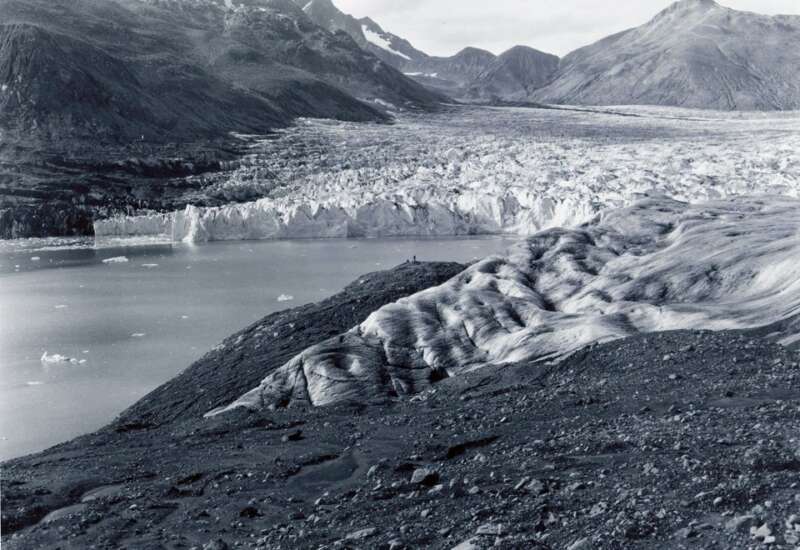
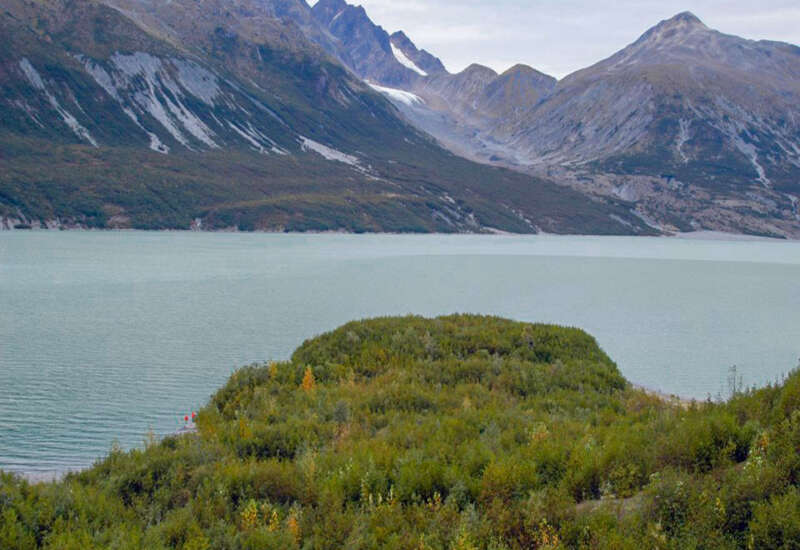
A 2019 mega study by Stephens, et al., shows significant support for the Early Anthropocene Hypothesis. From the abstract:
An empirical global assessment of land use from 10,000 BP to 1850 CE reveals a planet largely transformed by hunter-gatherers, farmers and pastoralists by 3,000 years ago, significantly earlier than land-use reconstructions commonly used by Earth scientists. Synthesis of knowledge contributed by over 250 archaeologists highlighted gaps in archaeological expertise and data quality, which peaked at 2000 BP.
This study also pushes the Early Anthropocene window back another 2,000 years to 10,000 years because of widespread Earth systems disruption caused by hunter gatherers where the authors tell us:
In addition to altering biotic communities around the world through transport and propagation of favored species, extensive early land use by hunter-gatherers may also indicate widespread use of fire to enhance success in hunting and foraging. Systematic burning has implications for the global carbon cycle through increased greenhouse gas emissions, for water-cycles through changes in vegetation and evapotranspiration, and for temperatures…
Boulder Glacier 1932 and 1988, Glacier National Park
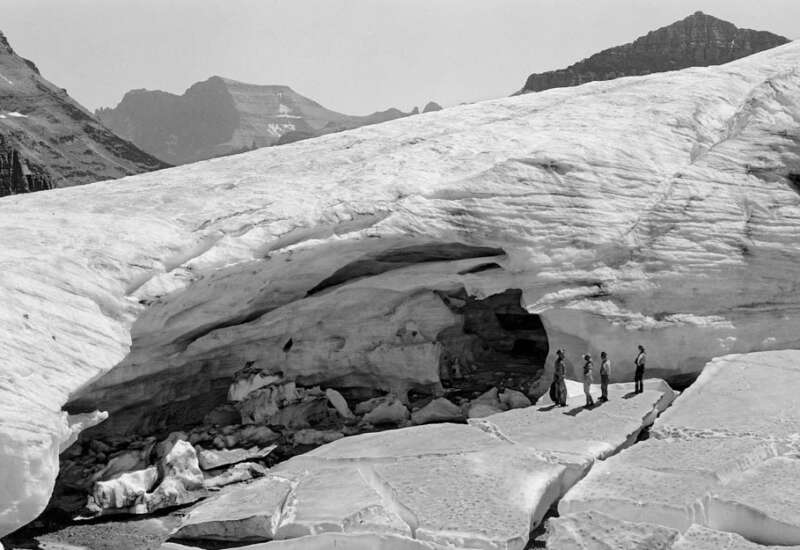
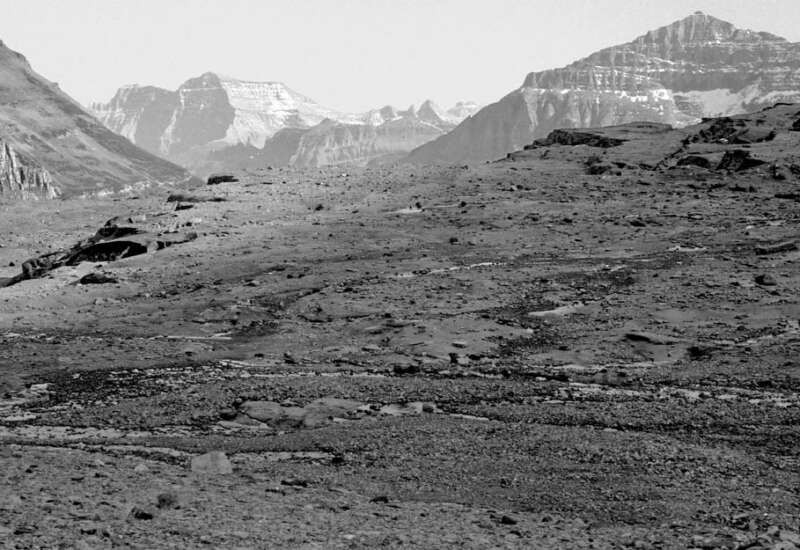
Ruddiman’s latest work is a review of recent science on the Early Anthropocene Hypothesis over the 16 years since he first published on the subject in 2003. He reports that the start of methane emissions from rice flood agriculture 5,000 years ago is now fairly settled in the literature, but CO2 remains a debated and complex issue. Ruddiman has this to say about CO2:
Scientists who work in fields that explore direct ground-truth evidence of human activity (archaeology, paleoecology, etc.) tend to favor the hypothesis, while those who rely on geochemical indices of environmental proxies are less positive. Because this is one of the most multi-disciplinary topics imaginable, the debate is unusually complex. As this paper will show, however, a clearer picture of the late Holocene CO2 rise has now emerged.
In 2003, Ruddiman estimated that 300-320 gigatons of carbon emissions were created from vegetation cleared prior to the Industrial Age. Other work of the time showed far less emissions from vegetation removal at around 50 gigatons. Since 2011, however, several findings have reported between 310 and up to 357 gigatons in emissions from vegetation removal.
One study published by Karl-Heinz Erb in 2018 is particularly insightful. It says that before human intervention, Earth’s forests contained 900 billion tons of biomass but currently, global vegetation was about 450 billion tons for a total forest removal of about 470 billion tons of biomass. During the industrial era, humankind has removed about 156 billion tons of vegetation. Humans have removed two-thirds of the forests that once existed on Earth, causing significant global warming, just as Ruddiman hypothesized in 2003.
Grinnell Glacier 1926 and 2008, Glacier National Park
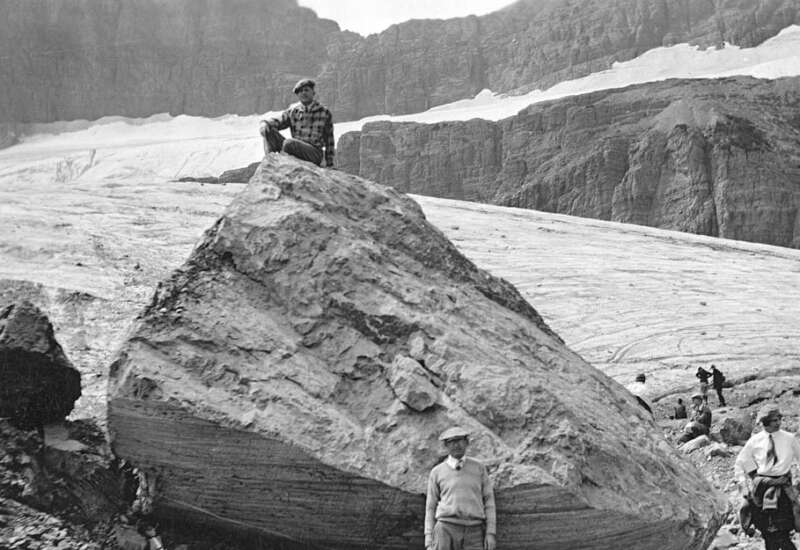
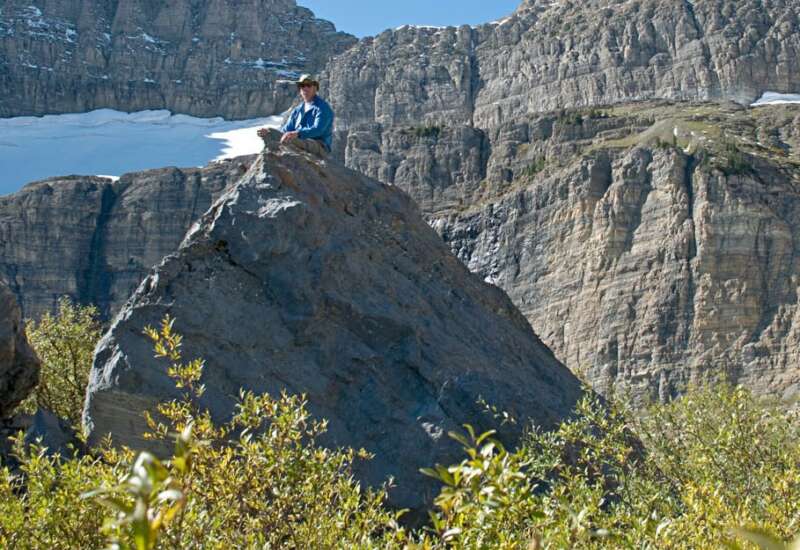
Live and Learn
The Early Anthropocene Hypothesis shows us that we still have a lot to discover about our climate and its interaction with our Earth systems. This controversial discussion has continued for nearly two decades and it will undoubtedly continue further. But what we can understand already is that our natural biosphere has a great capacity to mitigate for climate pollution. Research is now showing that humans have removed two-thirds of our forests that would equal 1,700 gigatons as carbon dioxide, or significantly in excess of 1.7 trillion tons of trees, or the weight of about 10,000 aircraft carriers. The periods in which Earth can regrow forests on scales like this are quite short in big-picture thinking, at a fraction of the duration of the Little Ice Age. If we only had this amount of time to restore our climate before already activated tipping systems become irreversible. Still, natural systems can certainly help in the decades remaining before the point of no return.
There is one more challenge: Estimates of the sequestration capacity of our natural systems are largely made from known behaviors of healthy systems. That capacity is unclear right now, with all of the degradation from droughts, fires and insect attacks, the collapsing permafrost underlying forests of the North, and the well-publicized flip of the Amazon that is possibly being repeated across global tropical forests; what is clear is that our global systems are anything but healthy. Fundamentally, collapsing systems do not self-restore unless the perturbation (warming) that caused the collapse to begin is stopped. Without restoring our climate back to within its old boundaries it will become more and more difficult, if not impossible, to get our forests to grow back so they can once again store carbon and cool our climate like they did during pulses of plague over the last 1,000 years.
To allow our forests to regrow, to mend our other collapsing Earth systems so they can help with this Herculean climate task ahead of us, we must restore our climate back to within the evolutionary boundaries of Earth’s systems, not allowing it to warm further from our current 1.2° C above normal to the almost unanimous global target of 1.5° C. If our forests are already in collapse, why would they then be able to sequester in any quantity close to that of healthy ecologies? Further warming will make them collapse even faster. So to allow our forests to help, first we must reduce Earth’s temperature, not allow it to warm further.
Rhone Glacier, Swiss Alps, 1900 and 2008
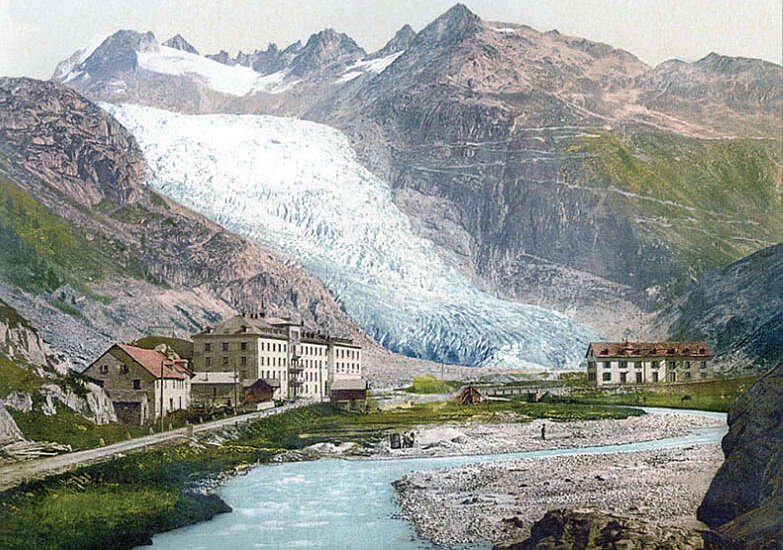
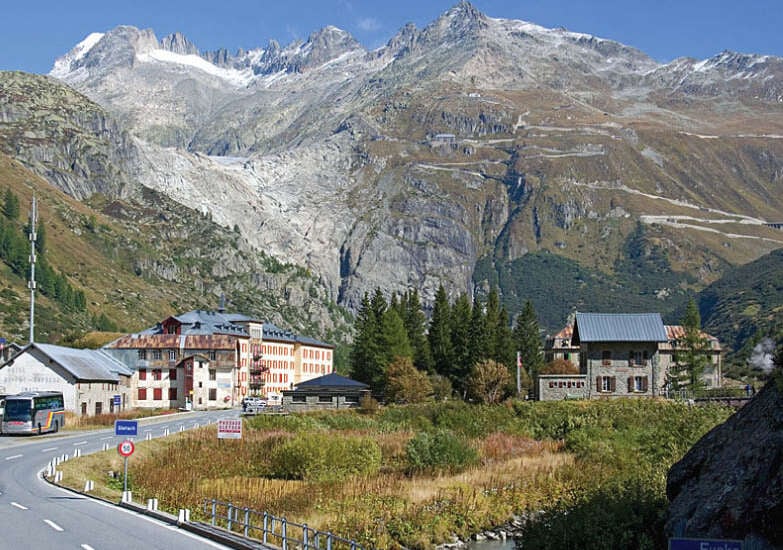
Ruddiman’s Early Anthropocene Hypothesis is a prime example of why there are assumptions and findings in academia and the policies based upon academic findings that are not reflected in our climate culture. The science and subsequent policy are based on scenarios. The scenario that humankind’s meaningful greenhouse gas emissions come only from the age of industrialization speaks to this. The scenarios that say we cannot remove CO2 from our atmosphere; that say impacts are locked in, or that the extremes are the new normal; that there is no plausible path to a 1.5° C world, or that the best we can do is avoid the worst — these things are based on scenarios. There are no restoration scenarios in all of the 1,202 scenarios in the latest Intergovernmental Panel on Climate Change (IPCC) report that are cooler than 1.5° C. The IPCC is very broadly what global, national and local climate policy is based upon. If the only scenarios upon which climate policy is based allow additional warming from our current 1.2° C above normal to a 1.5° C target, of course things will only get worse.
What we need are restoration scenarios that cool Earth so the mayhem reverts to its normal rare levels, and so our collapsing Earth systems can self-restore. Our future is not already written. This future of no going back is a function of the scenarios of science. If there are no scenarios for climate restoration, how can we work toward a restored world?
According to the Early Anthropocene Hypothesis, we should be well on our way to another 100,000 year-long ice age pulse by now. Massive changes to Earth’s systems beginning thousands of years ago created warming, the results of which are absent from our scenario-based climate culture. Deep and thoughtful interpretation can help us create a future that is not what current irreversible climate scenarios say it will be. We can indeed restore our climate and our Earth systems to within their former evolutionary boundaries and return the mayhem to its previous rareness, but first we have to put that option on the table.
Southeast Shore of Walker Lake National Natural Landmark
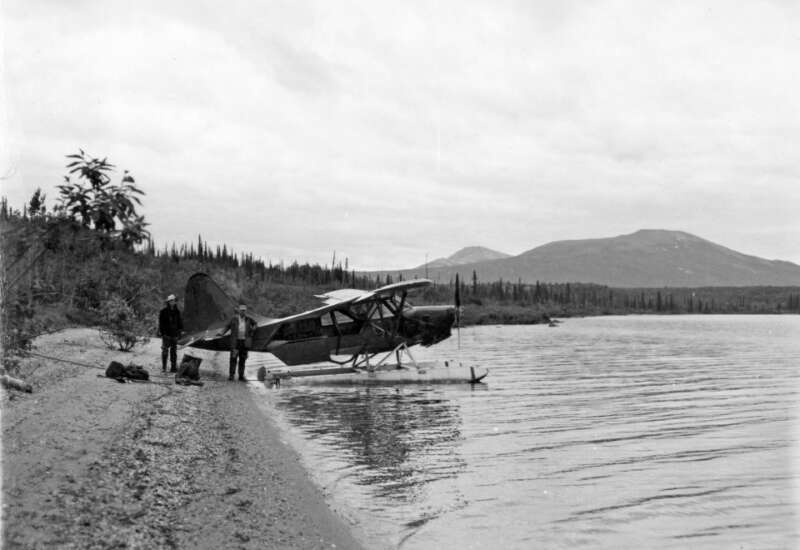
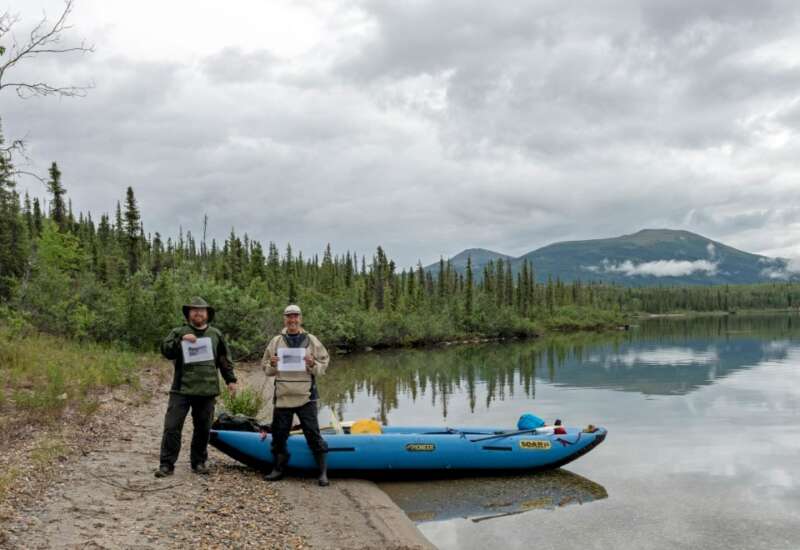
Join us in defending the truth before it’s too late
The future of independent journalism is uncertain, and the consequences of losing it are too grave to ignore. We have hours left to raise the $12,0000 still needed to ensure Truthout remains safe, strong, and free. Every dollar raised goes directly toward the costs of producing news you can trust.
Please give what you can — because by supporting us with a tax-deductible donation, you’re not just preserving a source of news, you’re helping to safeguard what’s left of our democracy.
